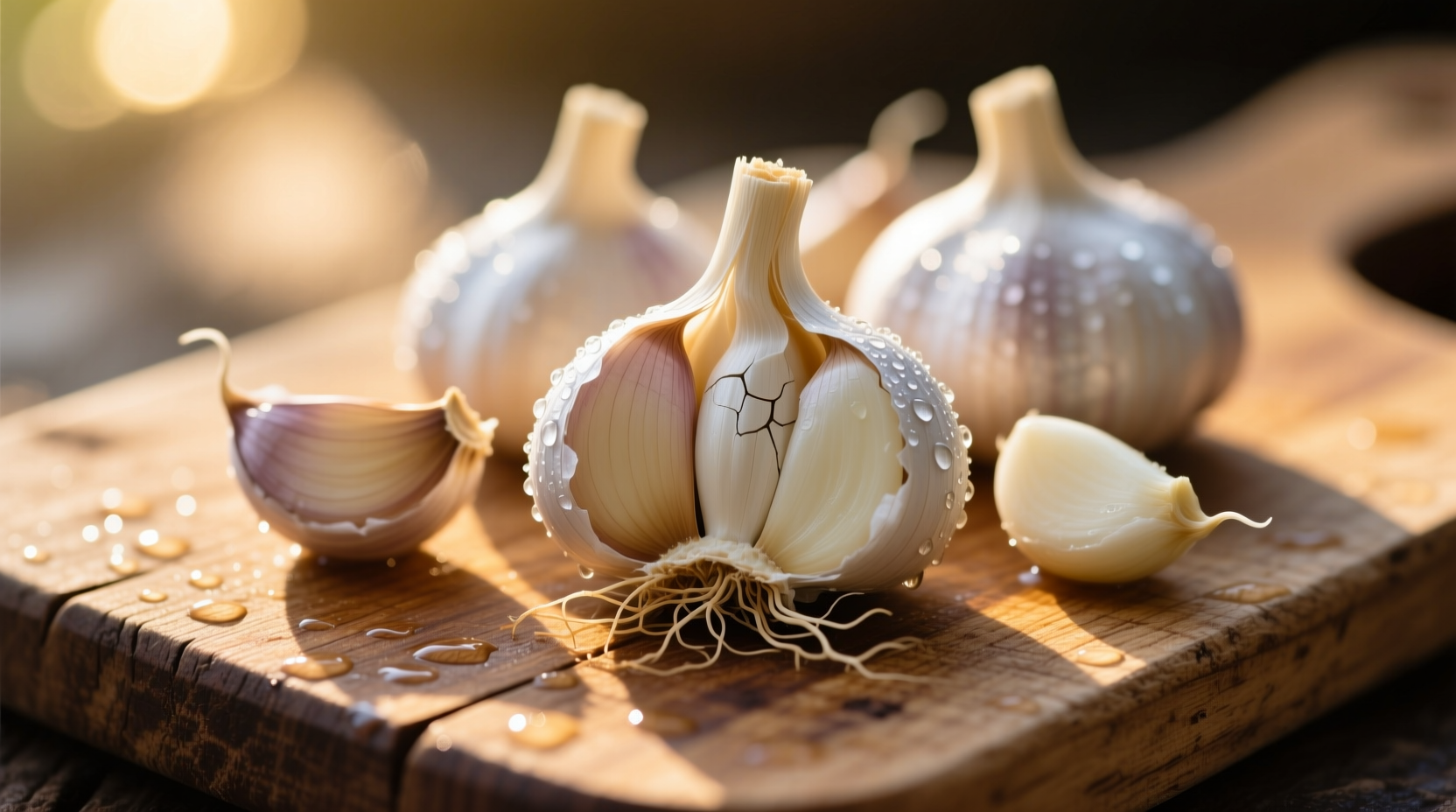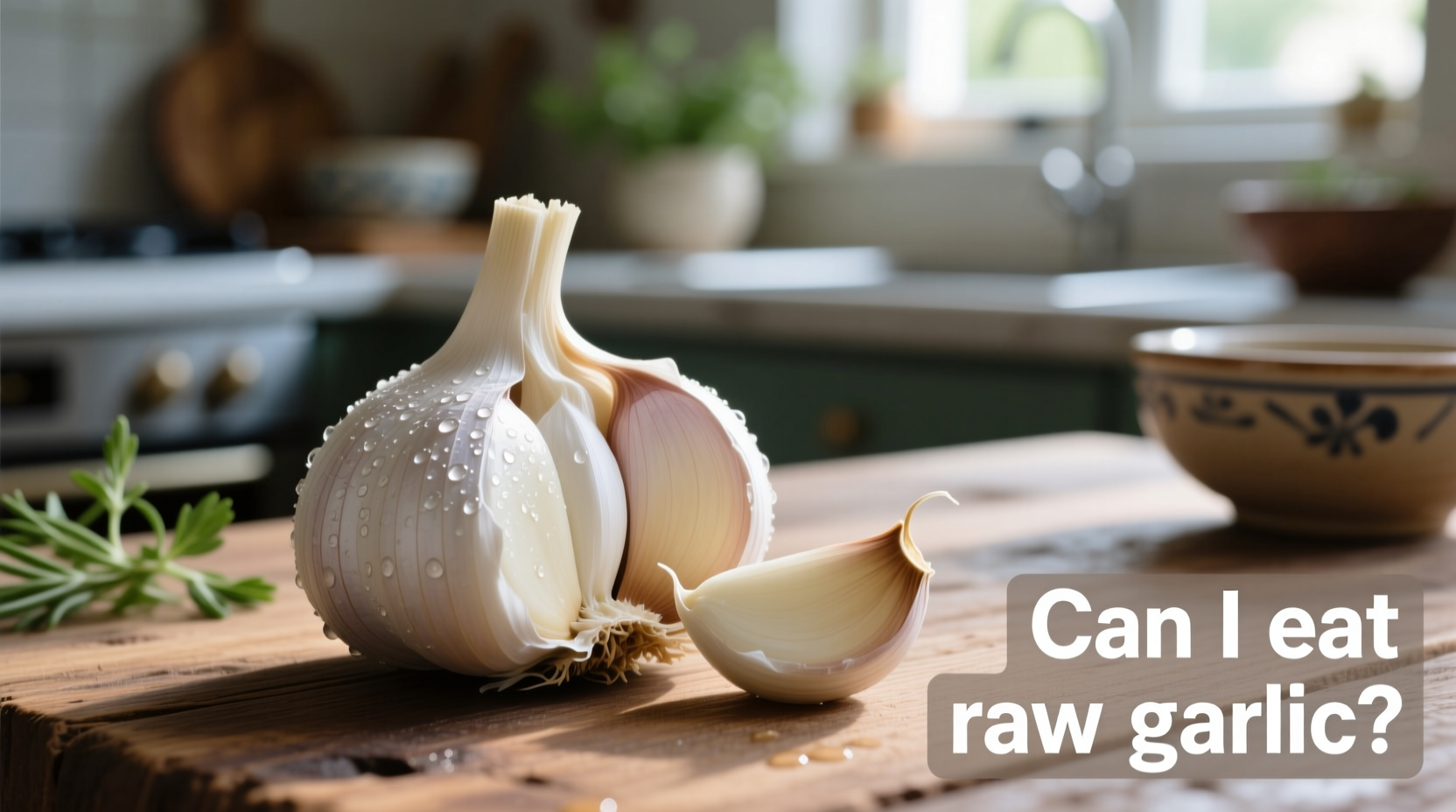The Science Behind Raw Garlic Consumption
When you crush or chop raw garlic, an enzyme called alliinase converts alliin into allicin—the compound responsible for garlic's distinctive aroma and most health benefits. This reaction happens within seconds and is most potent when garlic remains raw. Cooking garlic above 140°F (60°C) deactivates alliinase, significantly reducing allicin formation.
According to research published in the Journal of Agricultural and Food Chemistry, allowing crushed garlic to rest for 10 minutes before consumption maximizes allicin production. This simple preparation technique boosts bioactive compound availability by up to 30% compared to immediate cooking.

Documented Health Benefits of Raw Garlic
Numerous clinical studies validate specific health benefits associated with moderate raw garlic consumption:
| Health Benefit | Research Evidence | Recommended Intake |
|---|---|---|
| Cardiovascular Support | A 2020 meta-analysis in Phytotherapy Research showed raw garlic reduced systolic blood pressure by 5-8 mmHg | 1-2 cloves daily |
| Immune Function | University of Florida research demonstrated 67% fewer colds with regular raw garlic consumption | 1 clove daily during cold season |
| Antimicrobial Effects | National Institutes of Health studies confirm effectiveness against bacteria, viruses, and fungi | As needed for immune support |
Potential Side Effects and Risk Factors
While generally safe, raw garlic consumption carries some risks that vary by individual tolerance:
- Digestive discomfort: Up to 30% of people experience heartburn, gas, or abdominal pain (per Mayo Clinic observations)
- Blood thinning: Garlic's antiplatelet effects may increase bleeding risk, especially when combined with medications like warfarin
- Allergic reactions: Rare but possible, particularly in individuals with existing garlic sensitivity
- Medication interactions: May affect drugs metabolized by CYP3A4 liver enzymes
The European Medicines Agency notes that raw garlic's blood-thinning properties become clinically significant at approximately 3-4 cloves daily. For most healthy adults, moderate consumption presents minimal risk, but those with bleeding disorders should exercise caution.
Who Should Limit or Avoid Raw Garlic
Certain populations require special consideration before consuming raw garlic:
| Population | Recommendation | Scientific Basis |
|---|---|---|
| Pre-surgery patients | Avoid 7-10 days before procedures | National Center for Biotechnology Information warns of increased bleeding risk |
| People on blood thinners | Consult physician; limit to 1 clove daily | American Heart Association notes potential interaction with anticoagulants |
| Those with IBS | May trigger symptoms; consider aged garlic extract | Monash University research shows garlic as high-FODMAP food |
| Pregnant women | Safe in food amounts; avoid medicinal doses | National Institutes of Health considers culinary use safe during pregnancy |
Optimal Ways to Consume Raw Garlic
To maximize benefits while minimizing discomfort, follow these evidence-based preparation techniques:
- Crush and wait: Chop or crush garlic and let it sit for 10 minutes before consuming to maximize allicin formation
- Pair with food: Consume with other foods rather than on an empty stomach to reduce digestive irritation
- Start small: Begin with 1/4 to 1/2 clove daily and gradually increase to assess tolerance
- Consider timing: Morning consumption may reduce heartburn risk compared to evening intake
For those sensitive to raw garlic's intensity, try mixing minced garlic with honey or olive oil, which can help moderate its effects while preserving benefits. The World Health Organization recognizes these preparation methods as traditional approaches that maintain therapeutic properties while improving tolerability.
Raw vs. Cooked Garlic: Making the Right Choice
Understanding when to use raw versus cooked garlic helps optimize both flavor and health benefits:
- Choose raw garlic when: Seeking maximum cardiovascular benefits, immune support, or antimicrobial effects
- Choose cooked garlic when: Making sauces, soups, or dishes where milder flavor is preferred or digestive sensitivity is a concern
- Best compromise: Add garlic late in cooking process (last 5-10 minutes) to preserve some active compounds
Research from the University of California shows that while cooking reduces allicin, it creates other beneficial compounds like diallyl disulfide. This means both raw and cooked garlic offer unique health advantages—the key is matching preparation to your specific health goals.











 浙公网安备
33010002000092号
浙公网安备
33010002000092号 浙B2-20120091-4
浙B2-20120091-4